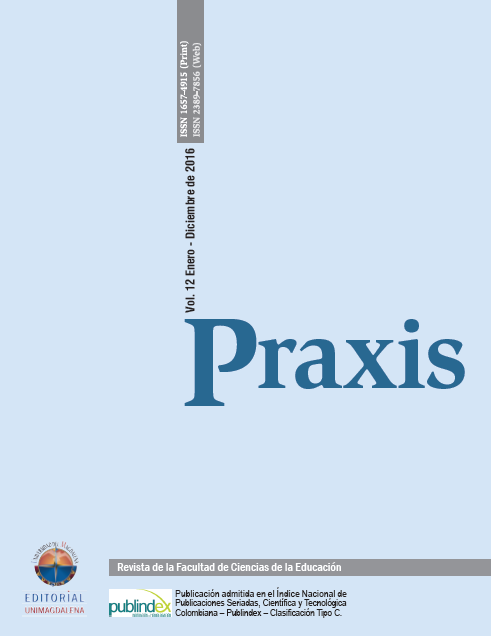Abstract
The virtual learning environments (AVAs) have been a subject of discussion and questions mainly on finding the best teaching practices, which tools you can use them and how to achieve optimum utilization have better results in virtual education, for Therefore in this paper some elements about the characteristics, history, teaching, studies have virtual environments and web applications as tools to support teaching and learning, are set for a virtual tutor note the when planning, designing, creating and implementing online courses. Thus the reader will find concepts, explanations and different evolutionary processes that wins ICT and how are you have been involved in the educational context, spotting potential applications from mediation of teaching, plus some suggestions of how to carry out exposed use thereof in virtual learning environments to strengthen the different processes of teaching and learning.References
Barberá, E. (2008). Aprender e-learning. Barcelona: Paidós.
Bautista, G., Borges, F., & Forés, A. (2006). Didáctica universitaria en entornos virtuales de enseñanza-aprendizaje. Madrid: Narcea.
Bracho Pérez, K., & Carruyo Duran, N. (2011). Planificación estratégica y gestión del gerente educativo en instituciones de educación primaria. Praxis, 7(1), 13-29. doi:http://dx.doi.org/10.21676/23897856.5
Cardona Bedoya, J., & Vaca González, Y. (2014). Estrategias de la unidad de negocio prestar servicios de formación virtual – unipanamericana compensar. Praxis, 10(1), 48-59. doi:http://dx.doi.org/10.21676/23897856.1358
Cukierman, U. Rozenhauz, J. & Santángelo, H. (2009). Tecnología educativa, recursos, Modelos y Metodologías. Buenos Aires. Editorial Pearson.
Díaz, F (2002). Didáctica y currículo: un enfoque constructivista. Univ de Castilla La Mancha.
Díaz, F., & Hernández, G. (2010). Estrategias docentes para un aprendizaje significativo: una interpretación constructivista. México, D.F.: McGraw Hill.
López, M. (2013). Aprendizaje, competencias y TIC: aprendizaje basado en competencias. México, D.F.: Pearson.
Medina, A., & Salvador, F. (2009). Didáctica general. Madrid. Pearson Prentice Hall : UNED
Nafria, I. (2008). Web 2.0: El usuario, el nuevo rey de Internet. Barcelona. Gestión 2000.
Peñalosa Castro, E. (2013). Estrategias docentes con tecnologías: guía práctica. Naucalpan de Juárez, México: Pearson.
Revuelta, F. Domínguez, & Lourdes Pérez, L. (2011). Interactividad de los entornos en la formación on-line. Editorial UOC.
Santoyo, C. (2005). Alternativas Docentes Volumen III. Análisis y evaluación de habilidades metodológicas, conceptuales y profesionales en la formación del psicólogo. México D. F. Universidad autónoma de México.
Ureña Villamizar, Y., & Villalobos de Weffer, R. (2011). Gestión del conocimiento en institutos universitarios de tecnología. Praxis, 7(1), 155-180. doi:http://dx.doi.org/10.21676/23897856.20

